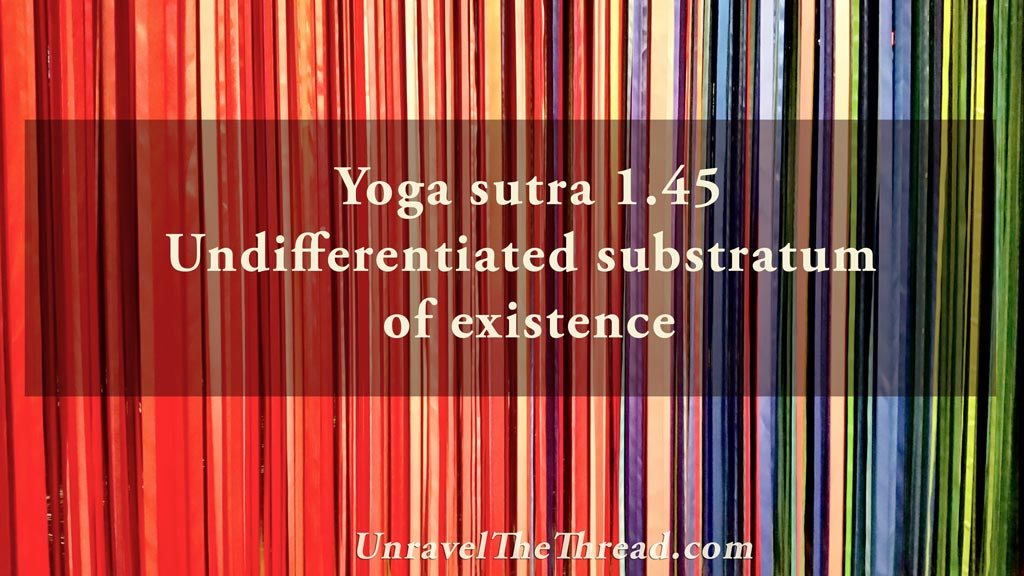
1.45 Undifferentiated substratum of existence
February 28, 2020
1.47 Purifying integration
February 28, 2020
1.45 Undifferentiated substratum of existence
February 28, 2020
1.47 Purifying integration
February 28, 20201.46 Integration states with seed (sabija)


1.46 These previous states of deep meditation (samadhi) are called with seed (sabija), because they use either a gross or subtle focal point.
The meditation practices up to this point have all used a focal object as a support, called a seed (bija). Just like scaffolding is erected during construction of a building, regardless of how useful the scaffolding was, once the building is complete, the scaffolding becomes an obstacle and, since it is no longer useful, it is removed. Similarly, the involution process of meditation keeps moving from the outside towards the innermost aspect of your being. Whatever focal point you are using to focus your awareness will eventually be released.
Another reason these types of integration (samadhi) are called with seed (sabija), is because there are still some remaining impressions (samskaras) stored in the practitioner’s subconscious memory. These impressions are the seeds of future actions and inclinations.
You can try the idea of releasing the focal point by refining the technique for chanting OM or AUM suggested in sutra 1.27. You start chanting at a comfortable level with external sound establishing a smooth flow of air and sound to invite your mind to stay with this experience. Gradually, start decreasing the volume of your chant so that the sound remains steady and fluid as it becomes softer and softer. Take your time and savor the experience. Continue making the sound softer until it becomes a barely audible whisper. Then continue moving your mouth while chanting silently, making the movements ever more subtle. Remaining focused inwardly, stop the movement of your lips and make your inner chant even more delicate so that your attention is gentle and effortless. Continue until the silent chant is as subtle as possible. Eventually release the silent chant and remain with its silent reverberation in your being. Remain with this soft yet persistent focus for as long as it is comfortable. When your mind becomes distracted return to chanting at the minimal level of effort, eventually releasing the chant again. What happens when you try this? What do you notice?
1.46 tā eva sabījassamādhiḥ
ता एव सबीजस्समाधिः ॥४६॥
As usual, one more way of exploring the meaning of this sutra is by chanting it.
You can choose to chant it in its traditional form with some of the words coming together:
- tāḥ
- va
- sabījaḥ
- samādhiḥ
Another option is to chant each word in the sutra individually:
Unravel the thread is now available as a book!
If you find Simple-Yoga.org and Unravel the thread useful, consider supporting my labor with a donation, you may also donate using PayPal or Venmo. Thank you!